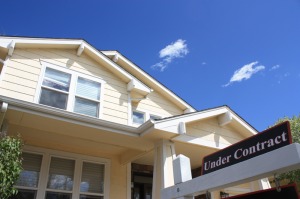Although many cities across the country are facing serious housing shortages, the efforts they are making to fix the problem are doomed to failure. Their so-called affordable housing programs address symptoms, not causes, and apply band-aid solutions when far different (but less costly) tools are needed.

Median home prices in most American cities are less than three times median family incomes, but in some cities they are five to ten times incomes. Under current mortgage rules, you can pay off the loan on a house that costs three times your income in less than 15 years, but a home that costs more than five times your income will take more than 30 years to pay off. Since most mortgages are limited to 30 years, this means housing has become unaffordable.
A full range of housing affordability can found along Colorado’s Front Range. According to the latest data from the Census Bureau’s American Community Survey, median homes in Pueblo cost less than three times median incomes. In Colorado Springs, they are slightly more than three times. In Denver and many of Denver’s suburbs, they are around four-and-a-half times incomes, while in Boulder they are more than six times incomes. To make matters worse, a median home in Boulder was nearly 10 percent smaller than one in Pueblo and 15 percent smaller than one in Colorado Springs.
In a growing region, housing prices are set by the cost of building a new home. This means anything that increases new home prices also increases the value of all homes in a market.
Most new homes in the Colorado Springs and Pueblo areas are built outside the city limits, where regulation is minimal and land costs are lowest. Competition with these new homes keeps housing inside of Colorado Springs and Pueblo affordable.
Cities, however, resent losing the potential tax revenues from homes built outside their limits. To minimize this, Denver and its suburbs have imposed an urban-growth boundary on the region. This increases the prices of land inside the boundary, making all housing more expensive. Knowing that builders have little choice but to build inside the boundary, Denver and many of its suburbs also impose more regulation and fees on new homes, further driving up their cost.
Boulder has gone considerably further. Although all of the land west of Boulder is open space in the Roosevelt National Forest, the city decided that wasn’t enough. Together, the city and county of Boulder have bought land or conservation easements for open space nearly ten times the size of the city itself, thus preventing construction of low-cost housing near the city.
All over the country, unaffordable housing is associated with similar rural land-use restrictions. Major cities California, Oregon, and Washington have drawn urban-growth boundaries. Montgomery County, Maryland relies on conservation easements to prevent urban expansion. Loudoun County, Virginia uses inflexible large-lot zoning rules.
![]() Having made housing unaffordable, many cities have responded by making the problem worse. Denver has passed, and the north Metro Denver suburb of Longmont is considering, an affordable housing mandate that requires developers to sell or rent 10 percent (or more) of the homes they build below their cost. This leads to fewer new homes being built and higher prices for the market-rate homes that are built to make up for the losses on the “affordable” units.
Having made housing unaffordable, many cities have responded by making the problem worse. Denver has passed, and the north Metro Denver suburb of Longmont is considering, an affordable housing mandate that requires developers to sell or rent 10 percent (or more) of the homes they build below their cost. This leads to fewer new homes being built and higher prices for the market-rate homes that are built to make up for the losses on the “affordable” units.
Denver and other cities also fund the construction of affordable housing by charging homebuilders fees for each new home they build. This makes low-cost housing for a few people while pushing up the price of housing for everyone else.
In California, where median home prices are often 7 to 10 times median family incomes, planners blame single-family homeowners for resisting the construction of high-density housing in their neighborhoods. A bill introduced in the legislature early this year would eliminate zoning in much of the state’s urban areas so developers could build more high-density housing.
Yet high-density housing costs more to build, per square foot, than single-family housing. Moreover, so long as urban-growth boundaries are in place, the cost of land per housing unit is still higher for high-density housing than for single-family housing in places that don’t have growth boundaries. No urban area has ever made itself affordable by building high-density housing rather than allowing low-density construction at the urban fringe.
The only way to make housing affordable is to eliminate the growth boundaries and other restrictions in the rural areas around cities. Any public officials who say they want more affordable housing but aren’t willing to talk about eliminating those regulations are not being serious.
Randal O’Toole (rot@ti.org) is director of the Transportation Policy Center at the Independence Institute, a free-market think tank in Denver.


